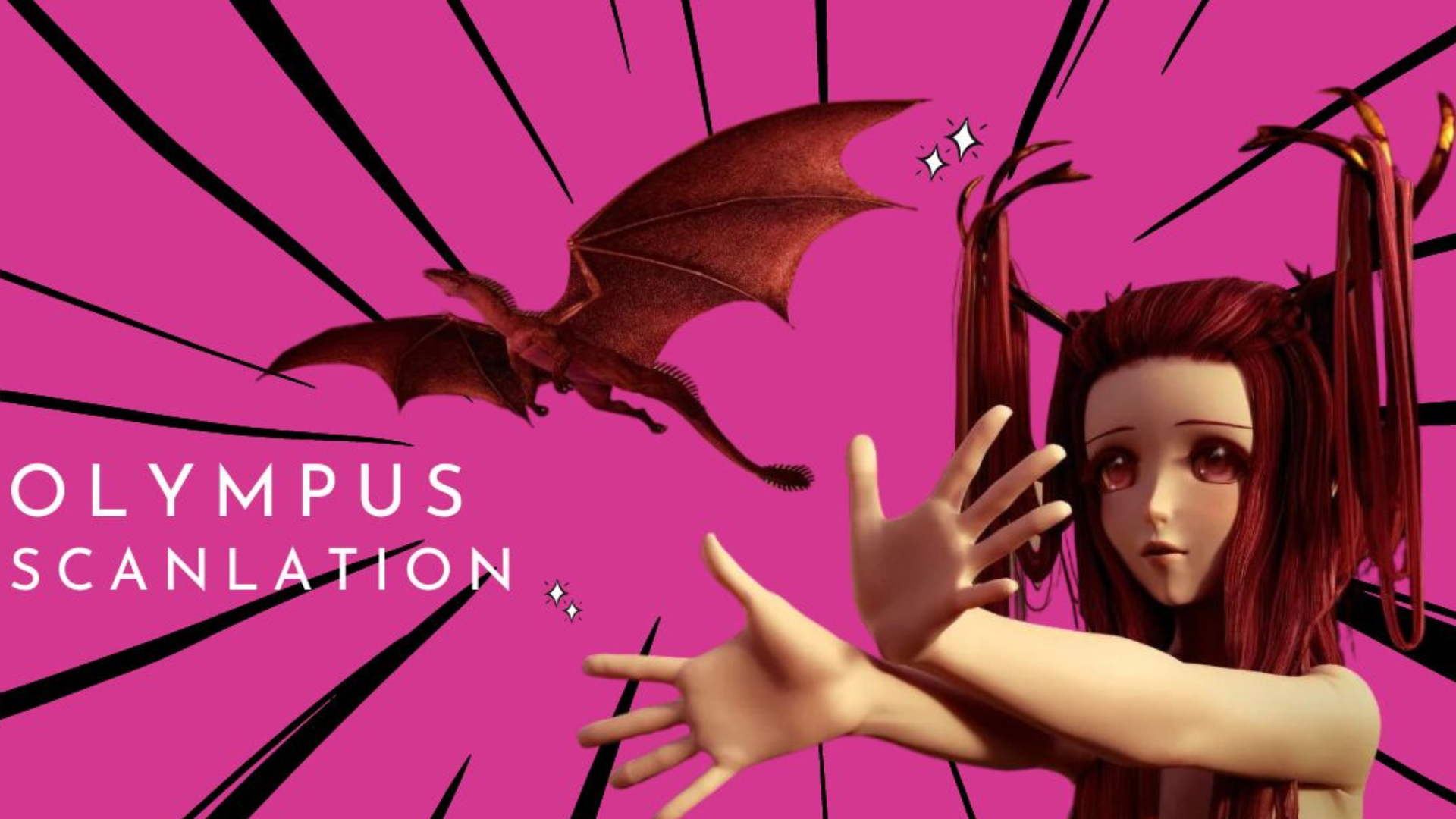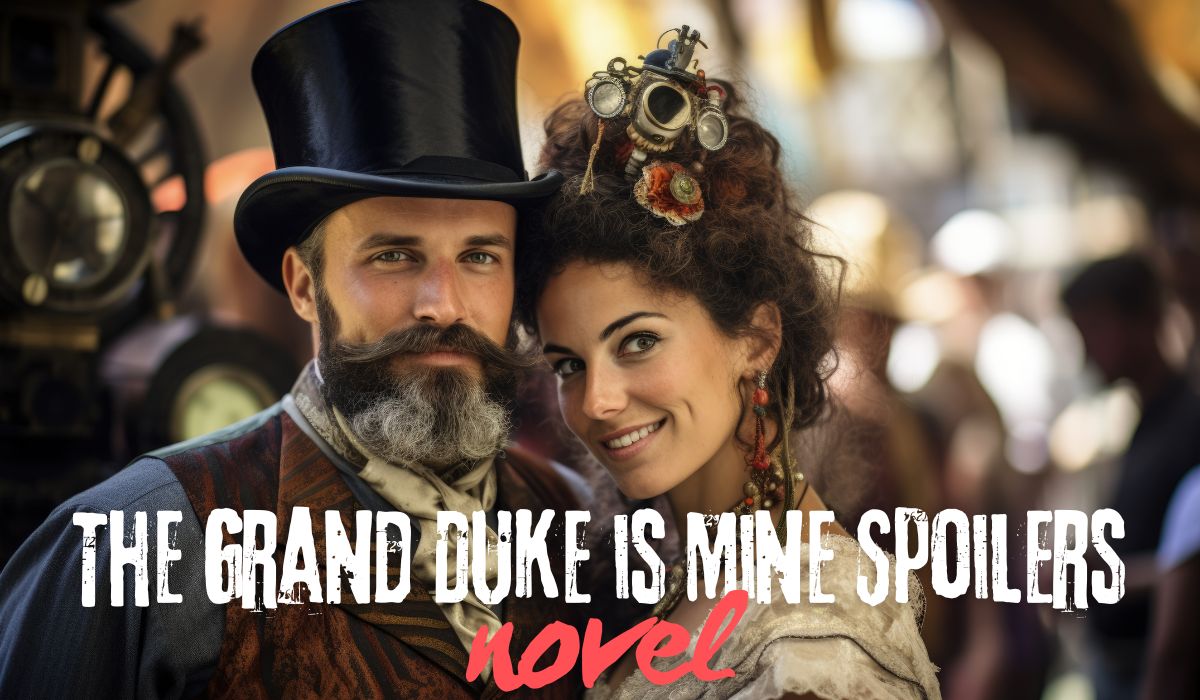ENTERTAINMENT
Book32: Unveiling a New Chapter in Reading


ENTERTAINMENT
Olympus Scanlation: A Comprehensive Guide

In the world of manga, the phenomenon of scanlation—fans translating manga for non-Japanese audiences—has played a significant role in bringing the medium to a global stage. Among the many scanlation groups out there, Olympus Scanlation stands out as one of the most recognized and respected names in the community. This group has contributed greatly to making popular manga accessible to fans worldwide, offering high-quality translations that resonate with readers.
Scanlation groups, such as Olympus Scanlation, serve as a bridge between Japanese manga creators and international readers. Through dedicated efforts, they help break the language barrier and introduce new audiences to the world of manga. However, there’s more to scanlation than simply translating text—it’s about preserving the essence, tone, and intent of the original work while making it enjoyable for fans.
This article aims to dive deep into the world of Olympus Scanlation, explore its role in the manga industry, and understand the process behind it. We’ll also take a look at the benefits and challenges of scanlation, as well as its impact on the broader manga culture.
What is Olympus Scanlation?
Olympus Scanlation is a fan-based scanlation group known for translating a wide range of manga titles, including some of the most popular and highly rated works in the manga industry. Like many other scanlation groups, Olympus Scanlation takes Japanese manga and translates it into languages like English, Spanish, French, and more to make it accessible to fans outside Japan.
Scanlation refers to the process of scanning, translating, and typesetting manga into another language, typically by fans and not affiliated with the official publishers. Many manga fans who may not have access to official translations turn to groups like Olympus Scanlation for their beloved manga series.
The process behind Olympus Scanlation involves skilled translators, typesetters, editors, and proofreaders, all working together to ensure the manga is accurately translated and visually appealing. These scanlation groups are often volunteers who dedicate their time and expertise to bring fans the manga they love.
How Olympus Scanlation Works
The scanlation process can be broken down into several stages, and Olympus Scanlation, like other groups, follows a structured approach to ensure high-quality results. Here’s a look at how the process works:
-
Scans and Raw Materials: First, Olympus Scanlation obtains the raw scans of the manga. These scans are usually taken from Japanese publications, whether through digital or physical sources. The raw scans are important because they serve as the foundation for everything else in the process.
-
Translation: Once the raw scans are available, the translation process begins. A skilled translator proficient in both Japanese and the target language—such as English or Spanish—works on translating the dialogue, sound effects, and context of the story. This step is critical in ensuring the translation is accurate and retains the essence of the original manga.
-
Typesetting: After the translation, typesetting comes into play. The typesetters work on placing the translated text into the manga panels. This requires not only technical skills but also an understanding of the layout and design of manga to ensure that the text fits within the speech bubbles and doesn’t obstruct important artwork.
-
Editing and Proofreading: Once the typesetting is complete, the manga goes through a final round of editing and proofreading. Editors check for any inconsistencies, spelling errors, or awkward phrasing. The goal is to make the translation as smooth and natural as possible while keeping the original meaning intact.
-
Final Release: After all these steps, the completed scanlated manga is uploaded and shared with the global community, often on fan websites, social media platforms, and other fan-driven manga-sharing networks.
Why Olympus Scanlation is Popular
Several factors contribute to the popularity of Olympus Scanlation. These include their consistent quality, fast releases, and community-driven efforts. Below are a few reasons why Olympus Scanlation has garnered a loyal following:
-
High-Quality Translations: Olympus Scanlation is known for delivering accurate, high-quality translations. Their translators work hard to ensure that the manga reads smoothly while preserving the tone and nuance of the original Japanese text. Fans appreciate the attention to detail that Olympus puts into every translation.
-
Wide Range of Manga: Olympus Scanlation covers a variety of genres, including action, romance, fantasy, and slice-of-life. They are known for translating both well-known mainstream titles as well as hidden gems that fans may not have otherwise discovered. This diverse selection keeps readers coming back for more.
-
Fast Updates: In the world of manga fandom, being the first to release a translated chapter is a big deal. Olympus Scanlation is known for being quick with its releases, often getting chapters out shortly after the official Japanese release. This has helped them build a dedicated fanbase that eagerly awaits their translations.
-
Community Engagement: Olympus Scanlation is also known for engaging with their readers and maintaining a friendly relationship with their audience. Many scanlation groups are part of vibrant online communities where fans can interact with translators, editors, and other readers. This sense of community fosters a connection between fans and the scanlation group.
Challenges Faced by Olympus Scanlation
While scanlation groups like Olympus play a key role in the global manga community, they also face a variety of challenges. These include:
-
Legal Issues: Scanlation groups often operate in a legal gray area. While fans love the free access to translated manga, the process of distributing copyrighted material without permission can lead to legal issues with publishers and creators. Many scanlation groups face the threat of having their content taken down or shut down entirely.
-
Time and Effort: The scanlation process is time-consuming and labor-intensive. Translating manga is not just about converting words; it requires understanding the context, cultural nuances, and artistic elements of the manga. Additionally, creating high-quality scanlations requires a team of skilled individuals, from translators to typesetters, all of whom volunteer their time.
-
Pressure to Maintain Consistency: With the growing popularity of Olympus Scanlation, there is constant pressure to maintain high standards. Fans often expect quick releases and consistent quality, and this can lead to burnout among members of the scanlation team. Balancing quality with speed is an ongoing challenge.
Olympus Scanlation’s Impact on the Manga Industry
Despite the challenges faced by scanlation groups, their contributions have had a lasting impact on the manga industry. One of the most significant effects is the introduction of manga to audiences who may not have had access to it otherwise. For many readers outside Japan, scanlations are the primary way to enjoy manga in their native languages.
While scanlation groups are sometimes seen as a threat to official publishers, they have also helped build a larger global audience for manga. Many readers who first encounter manga through scanlation eventually go on to purchase official releases, supporting the creators and publishers. This increase in global demand has helped boost the overall popularity of manga, encouraging publishers to invest more in international translations.
Conclusion
Olympus Scanlation is a key player in the world of manga translation. By offering high-quality, fan-driven translations, they have made manga accessible to a broader audience, fostering a global community of fans who share a love for the medium. Despite facing legal challenges and the pressure of maintaining quality, Olympus Scanlation continues to be one of the most respected scanlation groups, offering a gateway to the vibrant world of manga for readers worldwide.
Scanlation groups like Olympus are a vital part of the manga ecosystem, and their contributions cannot be overstated. While official translations continue to expand, the work done by groups like Olympus ensures that manga remains accessible and relevant to fans of all languages and cultures.
ALSO READ:Island Of The Dead Episode 2: Unveiling Secrets And Surprises
FAQs
What is scanlation, and how does it work? Scanlation is the process of scanning, translating, and typesetting manga into another language, typically by fans. It involves translating the text, fitting it into the artwork, and releasing it online for free.
Is Olympus Scanlation legal? Scanlation operates in a legal gray area, as it involves distributing copyrighted material without permission from the creators or publishers. However, many scanlation groups do it to share their love for manga with the global community.
How can I support Olympus Scanlation? Many scanlation groups accept donations or support through fan engagement. Additionally, supporting official manga releases by purchasing them helps show appreciation for the creators.
What types of manga does Olympus Scanlation translate? Olympus Scanlation works on a variety of genres, including action, romance, fantasy, and more. They translate both popular series and lesser-known titles, ensuring a wide selection of content.
Why is Olympus Scanlation so popular? Olympus Scanlation is known for its high-quality translations, fast release times, and its wide variety of manga. Fans also appreciate their community engagement and dedication to the craft.
ENTERTAINMENT
The Grand Duke is Mine Spoilers: Twists and Turns in Love and Royalty

Introduction
In the vast realm of historical romance novels, The Grand Duke is Mine by Eloisa James stands out as a delightful blend of wit, passion, and intricate storytelling. This novel, part of the Fairy Tales series, captures readers with its enchanting narrative that reimagines classic tales within the framework of Regency-era romance. In this article, we dive deep into The Grand Duke is Mine spoilers, providing a thorough exploration of the characters, plot, and themes that make this novel a must-read for romance enthusiasts. Whether you’re curious about the twists and turns or looking to understand the deeper elements of the story, this analysis will offer a comprehensive guide.
Overview of The Grand Duke is Mine
Before we delve into the specifics, let’s set the stage with a brief overview of The Grand Duke is Mine. This novel is loosely inspired by The Princess and the Pea and features a headstrong heroine, Olivia Lytton, who is trapped in a seemingly unavoidable engagement to a man she does not love. The story unfolds as she encounters Tarquin, the Grand Duke of a fictional European principality, whose icy demeanor hides a deep passion. The novel The Grand Duke is mine spoilers weaves together themes of duty, love, and self-discovery, all while offering readers the charm of a fairy-tale romance with a modern twist.
The Grand Duke is Mine Spoilers: Character Analysis
Olivia Lytton: The Spirited Heroine
Olivia Lytton is not your typical Regency-era debutante. With a sharp tongue and a quick wit, she often finds herself at odds with the societal expectations placed upon her. Despite her rebellious nature, Olivia is deeply loyal to her family, particularly her twin sister, Georgiana. Throughout the novel, Olivia’s journey is one of self-realization, as she grapples with her impending marriage to the Duke of Canterwick, a man she finds entirely unsuitable.
Spoiler Alert: Olivia’s engagement to the Duke of Canterwick, a man characterized by his absurdly dull personality and lack of physical appeal, sets the stage for her internal conflict. She knows her duty, but her heart rebels against the idea of a loveless marriage. This inner turmoil is crucial to understanding Olivia’s character, as it drives her actions and decisions throughout the story.
Tarquin, The Grand Duke: The Mysterious Love Interest
Tarquin, or Quin as he is known, is the titular Grand Duke and the novel’s brooding hero. His character is a study in contrasts; outwardly, he appears cold, distant, and burdened by his responsibilities as the ruler of his small principality. However, beneath this stoic exterior lies a man capable of deep emotion and passion.
Spoiler Alert: Quin’s initial interactions with Olivia are fraught with tension. He is drawn to her despite his better judgment, leading to a series of passionate encounters that challenge both of their preconceptions about love and duty. Quin’s development throughout the novel is marked by his growing realization that he cannot deny his feelings for Olivia, even if it means upending the carefully constructed life he has built.
Georgiana Lytton: The Dutiful Sister
Georgiana, Olivia’s twin sister, serves as a foil to Olivia’s rebellious nature. She is the epitome of the perfect lady—graceful, obedient, and entirely committed to fulfilling her role in society. However, Georgiana’s character is not without depth. Her own struggles with duty and desire add a layer of complexity to the narrative.
Spoiler Alert: Georgiana’s role becomes particularly significant when she falls in love with Quin, unaware of the growing connection between him and Olivia. This love triangle adds a layer of emotional conflict to the story, forcing Olivia to choose between her loyalty to her sister and her own burgeoning feelings for Quin.
The Plot Unveiled: Key Spoilers and Turning Points
The Forced Engagement
The Grand Duke is Mine Spoilers begins with Olivia’s reluctant engagement to the Duke of Canterwick, a man chosen by her parents to secure her future. This engagement is a source of great distress for Olivia, who finds herself trapped by societal expectations and familial duty. The Duke’s shortcomings as a partner only exacerbate her feelings of entrapment.
Spoiler Alert: Olivia’s engagement is not as unbreakable as it seems. As the story progresses, she becomes increasingly bold in expressing her discontent, leading to a series of events that ultimately disrupt the engagement. This turning point is critical, as it sets the stage for her relationship with Quin to develop.
The Meeting with the Grand Duke
Olivia and Quin’s first encounter is anything but conventional. Quin is immediately intrigued by Olivia’s sharp tongue and unapologetic demeanor, a stark contrast to the demure women he is accustomed to. This meeting sparks a slow-burning romance that defies the constraints of their respective obligations.
Spoiler Alert: The chemistry between Olivia and Quin is palpable from their first meeting. Their interactions are laced with both wit and tension, and it quickly becomes clear that they are kindred spirits. However, their growing attraction is complicated by the fact that Olivia is still engaged to the Duke of Canterwick, and Quin is expected to marry Georgiana, adding layers of complexity to their relationship.
The Love Triangle
One of the central conflicts in The Grand Duke is Mine is the love triangle between Olivia, Quin, and Georgiana. Georgiana’s infatuation with Quin adds emotional weight to the narrative, as Olivia is torn between her love for Quin and her desire to protect her sister from heartbreak.
Spoiler Alert: The love triangle reaches a climax when Georgiana discovers the connection between Olivia and Quin. This revelation forces all three characters to confront their true feelings and make difficult choices about their futures. The resolution of this triangle is handled with sensitivity, emphasizing the bonds of sisterhood and the power of true love.
The Climactic Resolution
As the novel reaches its conclusion, Olivia and Quin must face the consequences of their actions. The resolution of their story is both satisfying and true to the characters’ development throughout the novel.
Spoiler Alert: In the final act, Olivia and Quin’s love is put to the ultimate test. Quin must decide whether to honor his duty as the Grand Duke or follow his heart, while Olivia must confront the societal expectations that have dictated her life thus far. The ending sees them choosing love over duty, with Quin renouncing his claim to the throne to be with Olivia. This bold decision underscores the novel’s central theme of love conquering all obstacles.
Themes and Symbolism in The Grand Duke is Mine
Love vs. Duty
One of the most prominent themes in The Grand Duke is Mine is the conflict between love and duty. Both Olivia and Quin are bound by societal expectations and familial obligations that conflict with their personal desires. This theme is explored through their respective struggles with duty—Olivia’s engagement to the Duke of Canterwick and Quin’s responsibilities as the Grand Duke.
Spoiler Alert: The resolution of the love vs. duty conflict is central to the novel’s conclusion. Olivia and Quin’s decision to prioritize their love over their obligations is a powerful statement about the importance of following one’s heart, even in the face of societal pressure.
The Power of Self-Discovery
Another key theme in the novel is self-discovery. Both Olivia and Quin undergo significant personal growth as they navigate their feelings for each other and their roles in society. Olivia, in particular, learns to embrace her true self, moving beyond the constraints of what is expected of her as a woman of her time.
Spoiler Alert: Olivia’s journey of self-discovery is mirrored in her relationship with Quin. As she becomes more confident in her own desires and identity, she is able to fully embrace her love for Quin, leading to a more authentic and fulfilling relationship.
The Role of Humor and Wit
Eloisa James is known for her use of humor and wit in her novels, and The Grand Duke is Mine is no exception. The novel’s dialogue is sharp and clever, with Olivia’s biting remarks often serving as a form of self-defense against the constraints of her society.
Spoiler Alert: Humor plays a crucial role in the development of Olivia and Quin’s relationship. Their banter not only highlights their intellectual compatibility but also helps to break down the barriers between them. This use of humor adds a lightness to the novel, balancing the more serious themes of love and duty.
The Grand Duke is Mine Spoilers: Final Thoughts and Analysis
The Grand Duke is Mine is a richly layered novel that offers readers a compelling blend of romance, wit, and emotional depth. The characters of Olivia and Quin are well-drawn and relatable, their love story both passionate and tender. The novel’s exploration of themes such as love vs. duty, self-discovery, and the role of humor in relationships adds complexity to the narrative, making it more than just a typical romance.
Spoiler Alert: The resolution of the grand duke is particularly satisfying, with Olivia and Quin choosing love over societal expectations. This decision is not made lightly, but rather as a culmination of their individual journeys of self-discovery. The novel’s ending reinforces the idea that true love is worth fighting for, even when it requires great personal sacrifice.
ENTERTAINMENT
17th Century Death Roulette: The Perils and Superstitions of a Dangerous Era

Introduction
The 17th century was a time of exploration, conflict, and profound change across Europe and beyond. With the rise of maritime trade, the expansion of empires, and the dawn of the Enlightenment, this period was marked by both tremendous opportunity and perilous risks. Among the many dangers of the time, there existed a unique and often fatal game that has since been referred to as “17th century death roulette.” This term encompasses the deadly risks taken by sailors, adventurers, and even ordinary people, driven by superstition, desperation, or sheer audacity. In this article, we delve into the origins, examples, and impact of 17th century death roulette, providing a comprehensive and engaging exploration of this fascinating historical phenomenon.
The Origins of 17th Century Death Roulette
“17th century death roulette” is not a term that was used contemporaneously but rather a modern interpretation of the deadly risks and superstitions that permeated society during this era. The phrase encapsulates the idea of individuals knowingly or unknowingly engaging in life-threatening activities, often driven by the high stakes of survival, wealth, or honor.
The Age of Exploration and Maritime Perils
The 17th century was a period of intense maritime activity, with European powers like Spain, Portugal, England, and the Netherlands competing for control of trade routes and colonies. This era, often referred to as the Age of Exploration, saw countless ships setting sail for distant lands, braving treacherous waters, unknown territories, and often hostile encounters with indigenous peoples.
One of the most infamous legends associated with this period is that of Captain Hendrick Vanderdecken, a Dutch captain who is said to have defied the gods by vowing to round the Cape of Good Hope during a storm. According to legend, his hubris led to a curse that doomed his ship, the Flying Dutchman, to sail the seas forever as a ghostly apparition. This tale is a classic example of 17th century death roulette, where a sailor’s ambition and defiance led to eternal damnation.
The dangers faced by sailors during this time were immense. Storms, shipwrecks, scurvy, and piracy were constant threats. The very act of embarking on a long voyage could be seen as a form of death roulette, where the odds of survival were uncertain, and the risks were high.
Superstition and the Role of Religion
Superstition played a significant role in the daily lives of people during the 17th century. The line between science and superstition was often blurred, with many believing that natural disasters, illnesses, and other misfortunes were the result of divine punishment or curses.
One of the most dangerous superstitions of the time was the belief in witchcraft. The fear of witches led to widespread hysteria and the infamous witch hunts that claimed the lives of thousands across Europe and the American colonies. Accusations of witchcraft were often based on little more than rumor or personal vendetta, and those accused faced brutal trials where the odds were heavily stacked against them—a true form of 17th century death roulette.
The Puritans, who had a significant influence on 17th century society, particularly in England and New England, believed in the omnipresence of the devil and the constant threat of damnation. This belief system contributed to the severity of the witch trials, where an accusation alone could lead to a death sentence.
Examples of 17th Century Death Roulette
Throughout the 17th century, there were numerous instances where individuals engaged in activities or made decisions that could be seen as forms of death roulette. These examples highlight the precarious nature of life during this time and the extreme risks people were willing to take.
The Plague and Quarantine Roulette
The 17th century was marked by several devastating outbreaks of plague, particularly the Bubonic Plague. One of the most famous examples is the Great Plague of London in 1665-1666, which killed an estimated 100,000 people—nearly a quarter of the city’s population.
Quarantine was the primary method used to control the spread of the plague, but it was often a deadly gamble. Infected houses were sealed off, and the inhabitants were left to die inside, with a red cross painted on the door and the words “Lord have mercy upon us.” For those trapped inside, it was a matter of time before death claimed them. For others, the decision to flee the city in hopes of escaping the plague was equally perilous, as the disease often followed them into the countryside. This situation represented a cruel form of death roulette, where survival depended on luck as much as any precaution.
The Witch Hunts: A Deadly Game of Accusation
The witch hunts of the 17th century, particularly in Europe and colonial America, are a chilling example of death roulette. The most notorious of these was the Salem witch trials in 1692, where 20 people were executed, and many others were imprisoned on charges of witchcraft.
Accusations of witchcraft were often based on superstition, fear, and personal vendettas. Once accused, the chances of surviving a witch trial were slim. The methods used to determine guilt were barbaric and biased. One such method was the “swimming test,” where the accused was bound and thrown into water. If they floated, it was taken as proof of guilt, and they were executed; if they sank (and often drowned), they were deemed innocent—a lose-lose situation that epitomized the concept of death roulette.
Naval Warfare and the Gamble of Battle
Naval warfare during the 17th century was another arena where death roulette played out on a grand scale. The Anglo-Dutch Wars, fought between England and the Dutch Republic, were a series of conflicts that saw massive naval battles with high casualties.
Sailors and officers alike faced deadly risks in these battles. Ships were often overcrowded with poorly trained crews, and the conditions on board were abysmal. Disease was rampant, and the threat of being killed by cannon fire or drowning in a shipwreck was ever-present. The decision to join the navy or engage in battle was a gamble with one’s life, driven by a mixture of patriotism, necessity, and the hope of spoils.
One such example is the Battle of Lowestoft in 1665, the first naval engagement of the Second Anglo-Dutch War. The English fleet, under the command of James, Duke of York, decisively defeated the Dutch. However, the victory came at a high cost, with both sides suffering heavy casualties. The chaos and destruction of such battles were akin to spinning a deadly roulette wheel, where survival was far from guaranteed.
The Duels of Honor: Personal Death Roulette
Dueling was a common practice in the 17th century, especially among the nobility and military officers. It was seen as a way to defend one’s honor, but it was also a dangerous form of death roulette. Duels were often fought over trivial matters, and the outcomes were deadly.
The duel between George Villiers, 2nd Duke of Buckingham, and Francis Talbot, 11th Earl of Shrewsbury, in 1668 is a famous example. The duel was fought over a scandalous affair and ended with the death of Shrewsbury. Despite the illegality of dueling, it was widely accepted as a means of settling disputes, and those who engaged in it did so knowing they were risking their lives.
The Psychology Behind 17th Century Death Roulette
Understanding why people engaged in such perilous activities during the 17th century requires a look at the psychological and cultural factors at play. The concept of honor, the influence of superstition and religion, and the harsh realities of life in this era all contributed to the willingness of individuals to take life-threatening risks.
The Concept of Honor and Reputation
In the 17th century, honor was a central concept, particularly among the upper classes. A person’s reputation was of utmost importance, and any perceived slight could lead to a challenge for a duel. The fear of losing honor or being branded a coward was often stronger than the fear of death itself, leading many to engage in duels or other dangerous activities that could easily end in their demise.
Superstition and Fatalism
Superstition was rampant in the 17th century, and many believed that their fate was predetermined by divine forces or the stars. This fatalistic worldview made it easier for individuals to engage in risky behavior, as they believed that their destiny was already decided. Whether it was braving a storm at sea, participating in a witch trial, or fighting in a duel, the belief that one’s life was in the hands of fate played a significant role in the willingness to gamble with death.
The Harsh Realities of Life
Life in the 17th century was fraught with danger, disease, and uncertainty. The average life expectancy was much lower than today, and many people lived in conditions that would be considered extreme by modern standards. In such a harsh environment, the concept of death roulette was not as foreign as it might seem to us today. People were accustomed to living on the edge, and the risks they took were often seen as necessary for survival or advancement.
The Legacy of 17th Century Death Roulette
The concept of death roulette in the 17th century has left a lasting legacy in both history and popular culture. The tales of doomed voyages, deadly duels, and witch trials continue to captivate our imagination, serving as cautionary tales about the dangers of hubris, superstition, and blind ambition.
Literature and Folklore
The legends and stories from this period have been immortalized in literature and folklore. The tale of the Flying Dutchman, for instance, has been adapted into countless books, operas, and films, symbolizing the eternal struggle against fate and the consequences of defying nature’s laws.
Similarly, the stories of the witch trials, particularly those of Salem, have become a powerful part of American cultural identity. They serve as a reminder of the dangers of mass hysteria and the perils of allowing fear and superstition to override reason and justice.
Lessons for Modern Society
While the specific practices of 17th century death roulette may seem distant and archaic, the underlying themes are still relevant today. The tension between risk and reward, the influence of societal pressures, and the impact of irrational beliefs on decision-making are all issues that continue to resonate in the modern world.
In the context of personal and professional life, understanding the lessons of 17th century death roulette can help us navigate the risks we face today. Whether in business, politics, or personal relationships, the balance between caution and daring is as important now as it was then.
Conclusion
The concept of “17th century death roulette” encapsulates the extreme risks and deadly challenges faced by individuals during one of history’s most turbulent periods. From the treacherous seas of the Age of Exploration to the deadly superstitions of the witch hunts, the 17th century was a time when the stakes of life and death were constantly in play.
By exploring the origins, examples, and psychological factors behind this phenomenon, we gain a deeper understanding of the period and the people who lived through it. Their stories remind us of the dangers of hubris, the power of belief, and the thin line between courage and recklessness
-

 TECHNOLOGY11 months ago
TECHNOLOGY11 months agoStay Ahead with iLikeCPMix: Adapting to Industry Trends
-

 TECHNOLOGY11 months ago
TECHNOLOGY11 months agoSSIS 816: Mastering Seamless Connectivity Across Platforms
-

 BUSINESS11 months ago
BUSINESS11 months agoCrypto30x: Mastering Profit-Taking Strategies in the Crypto Market
-

 BUSINESS11 months ago
BUSINESS11 months agoBitcoin Price Fintechzoom: Understanding the Basics of Digital Currency
-

 TECHNOLOGY11 months ago
TECHNOLOGY11 months agoRosewellsk: A Comprehensive Overview of Its Impact and Relevance
-

 HEALTH11 months ago
HEALTH11 months agoUlcuprazol: Comprehensive Insights into a Powerful Proton Pump Inhibitor
-

 ENTERTAINMENT11 months ago
ENTERTAINMENT11 months ago17th Century Death Roulette: The Perils and Superstitions of a Dangerous Era
-

 TECHNOLOGY11 months ago
TECHNOLOGY11 months agoBoltból: Revolutionizing Device Efficiency and Connectivity
Kasey Steinmuller
June 30, 2025 at 1:41 am
Your comment is awaiting moderation.
Hello there, just became alert to your blog through Google, and found that it’s truly informative. I am going to watch out for brussels. I will appreciate if you continue this in future. Lots of people will be benefited from your writing. Cheers!